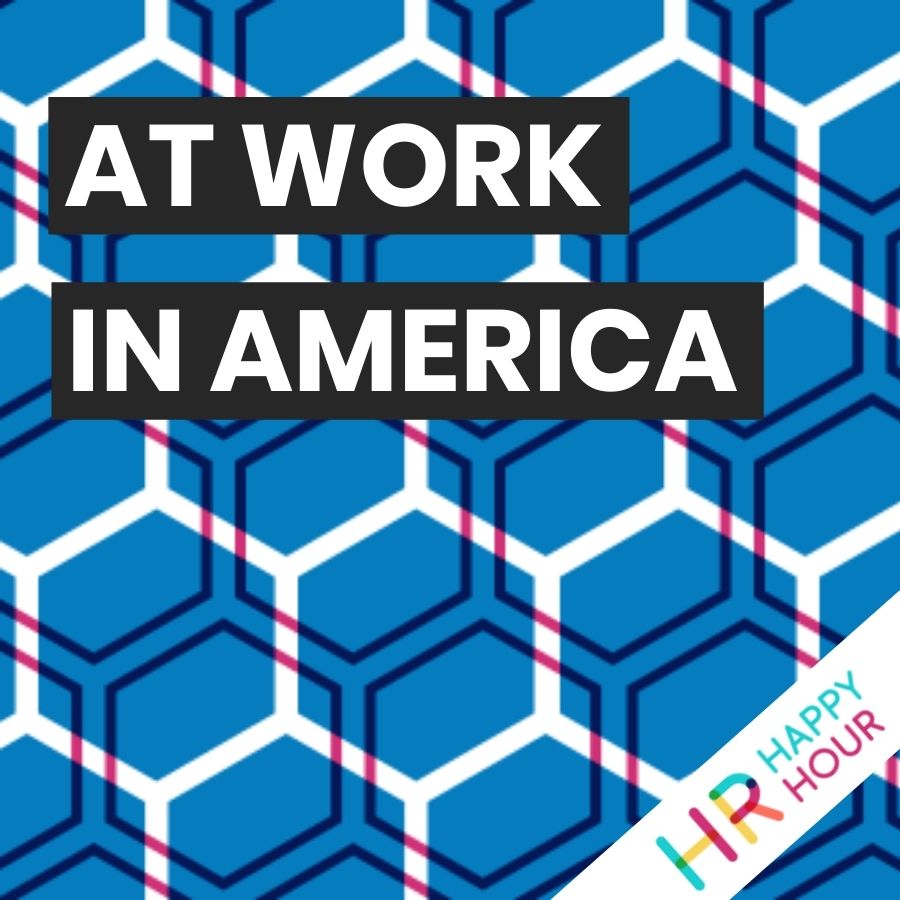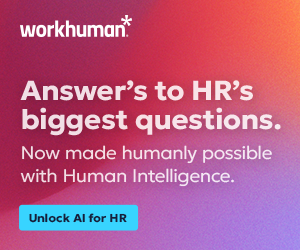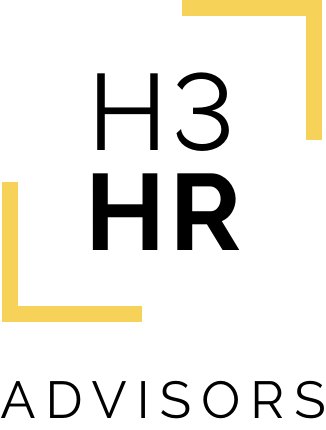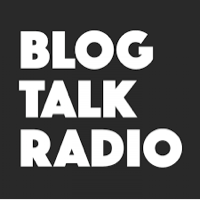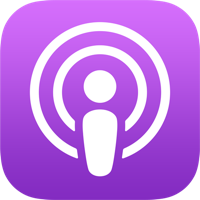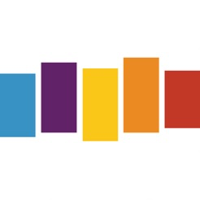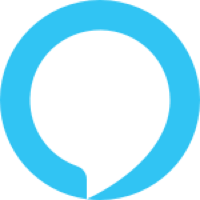Exploring the Future of Human Capital: Insights on Talent Management in 2023
Hosted by

Steve Boese
Co-Founder and Chief Data Officer of H3 HR Advisors and Program Chair, HR Technology Conference

Trish Steed
Co- Founder and Chief Strategy Officer, H3 HR Advisors
About this episode
Exploring the Future of Human Capital: Insights on Talent Management in 2023
Hosts: Steve Boese, Trish Steed
Guest: Michael Ehret, Head of Global Talent Management, Johnson & Johnson
This episode of At Work in America is sponsored by Paychex, one of the leading providers of HR, payroll, retirement, and insurance solutions for businesses of all sizes. As the workplace continues to evolve, businesses are being forced to adapt and innovate to meet the challenge. Our fifth annual workforce trend study will help you understand this year’s top business challenges — and set your strategic priorities. Get the report, 2023 Priorities for Business Leaders: Trends, Insights, and Ideas for an Evolving Workplace to learn the challenges facing businesses like yours and how you don’t have to go it alone. Visit paychex.com/awia to check it out, today.
This week we met with Michael Ehret from Johnson & Johnson to talk about talent management innovations, trends, and themes we will be seeing in 2023.
– Preparing your organization for the unpredictable future
– The importance of having baseline data for HR leaders
– Trends in the recruiting environment
– Benefits of working with people with diverse backgrounds
Learn more about Johnson & Johnson here
Thank you for joining the show today! Remember to subscribe wherever you get your podcasts!
Transcript follows:
Announcer 0:00
Welcome to At Work in America sponsored by Paychex. At Work in America digs in behind the headlines and trends to the stories of real people making a difference in the world of work. And now here are your hosts, Steve Boese and Trish Steed.
Steve 0:26
Welcome the At Work in America Show. My name is Steve Boese. Trish, how are you today?
Trish 0:31
I’m great, Steve, how are you?
Steve 0:33
I am well. It’s great to be with you. It’s great to be talking HR and talent today, which we will be doing. I’m super excited for the show. We’ve got a great guest waiting in the wings to talk all about talent management and what’s happening today and what’s happening in the in the future. Before we welcome him to the show. Trish, I want to thank our friends at Paychex. Of course, this episode of At Work in America is sponsored by Paychex, one of the leading providers of HR, payroll, retirement and insurance solutions for businesses of all sizes. As the workplace continues to evolve, businesses are being forced to adapt and innovate to meet these challenges, and Paychex fifth annual workforce trends study will help you understand these top challenges and set your strategic priorities. You can download the report 2023 that already is for business leaders, trends, Insights and Ideas for an evolving workplace. To learn more about the challenges facing businesses like yours, and how you don’t have to go it alone. You can visit paychex.com/awia to check out that report and much more information from our friends at Paychex today. So thank you to them. They’re awesome. And Trish, we’re gonna be working with them for another year or two as well. I don’t know if we’ve announced that yet. But we’re super excited to have Paychex on board. We’re another year supporting the At Work in America podcast. So thanks to them. Trish, let’s talk talent management.
Trish 1:52
I love it. Let’s go.
Steve 1:54
I am super excited for today’s show. We are happy to welcome to the show, Michael Ehret. He’s the head of global talent management at J&J. He’s responsible for the attraction and development of global and diverse talent across the enterprise. Michael oversees succession management, talent development, talent acquisition, workforce analytics, talent, mobility, performance management and assessment. There’s probably 17 other things we didn’t even mention, Michael, that you’re probably dealing with. But first off, welcome to the show. Michael, how are you today?
Michael Ehret 2:27
I’m great. Steve, thanks so much to you and Trish for having me today.
Steve 2:30
Oh, it’s great to have you for many reasons, just because of your perspective on what’s going on in the world of talent management in HR and talent development, but also, we shared prior to the show you’re in New Jersey. I grew up in New Jersey. So we bonded a little bit over some shared New Jersey roots. But Trish, here’s what some research I did this morning, which made me very excited about the show, which is this I am not just a daily consumer and user of J&J products. I’m like a seven times a day consumer and user of J&J products we’re talking about Tylenol, Zyrtec thank God for Zyrtec by the way oh my gosh, right. Listerine, bandaids and that’s not even getting into some of the more like those are important products right that people use it every single day. But there’s loads of other products right that that into pharmaceuticals and medical equipment, and on and on and on. It’s J&J is a massive company. Attrition number 37 on the fortune 500 from 2020 to around 150,000 employees worldwide, so massive in size, massive and scope and scale. So Michael, great to have you on the show today. I just wanted to set a little bit of that context before we welcome you to the show. So how are things in the world of J&J? What a crazy three years it’s been for everyone, but certainly a company like J&J.
Michael Ehret 3:53
Indeed, I mean, I would say, you know, who would have envisioned or imagined what the last three years have brought on so many different levels. And I can tell you, when you say, you know, how’s it going to J&J I can’t think of a more important time for healthcare and the importance of health care and not just in the notion of some of the, the products and solutions that you talked about the but just how much, you know, pressure and stress people have been under and, you know, sort of broadening out this view of health to go beyond physical health, but to think about mental health and well being and the holistic self. And, you know, for me, it’s really quite engaging to work at the world’s largest health care company to try to, you know, help people live, you know, healthier and happier lives. So, lots happening, as I’m sure you could suspect lots happened in J&J.
Trish 3:54
Yeah, I’m glad you mentioned that, Michael, because I think too, sometimes when you’re working in human resources, it’s sometimes difficult to connect sort of the work that we do in helping our employees and helping our leaders in working together and managing talent. But it seems like even though something, you know, like the pandemic, it’s a crisis, of course. But it does bring awareness, I think, to the larger employee population of how valuable the work that human resources does in terms of whether it’s providing these these health benefits these mental health benefits, but even connecting the dots, for example, within you know, J&J of what you do and how that matters to the larger population, right. So I feel like there’s lots of little bits of silver lining that kind of come out of when there is a crisis in your organization can come together as employees. I mean, were you seeing that at J&J?
Michael Ehret 5:51
Yeah. I mean, J&J being 138 year old company, I think this is a little bit embedded in our roots, which is a company at the end of the day, which is trying to provide, you know, try to improve health for the world, collectively and individually. So I’m sure you talk a lot about and have talked a lot about, on the podcast, this sort of impertinent importance of values and purpose. And I’d venture to say that from a US perspective, J&J is one of the originators of being a purpose based company, and that that purpose was pretty well articulated by the son of our founder, General Robert Wood Johnson in our credo, so that, you know, this notion of, you know why I’m sure, I am, both of you, and many other you know, many of your listeners, the reason why we got into HR, despite how advanced we become from a technology and data perspective, is a little bit of a calling to serve others and help people and organizations to be happy and successful. There’s, I find that to be a bit of a commonality around those that are called to, to human resource practice. So this convergence of there being great demand, and working at a place where there’s a pretty clearly aligned view of purpose and values and being able to help. That is, if I could speak for my 150,000 colleagues is maybe one of the biggest reasons why we continue to be excited and engaged and motivated to go to work every day.
Steve 7:25
Michael, thank you for that. I am thinking about a second ago, we talked, we introduced you right. And we talked about all the areas that you were involved with J&J across this 150,000 global workforce. And I wanted to sort of get into your your thought process around. How do you decide? Well, maybe maybe it’s not possible. But here’s what we need to work on sort of now, right? Here are the things that are really pressing, these are important for the business, these are important for our people, right now. And those can change, right? There was a pandemic all of a sudden, right. And then there are maybe some macro economic headwinds, and maybe in certain parts of the business now, I’m not sure, but we certainly see it in in tech businesses, right lately. Or maybe there are issues in different pockets of the world where you operate that require certain interventions, maybe that are a little bit more acute. But how do you sort of balance? These are the things we need to work on right now. Versus, hey, this is how we need to manage talent going forward with you know, with thinking five year tenure, and in J&J’s case, the next maybe even 100 years in mind.
Michael Ehret 8:29
Yeah, what a great question, Steve. I mean, I think it’s some of this comes from experience. So you know, my whole career outside, I started in finance. And then I quickly made the jump over to HR as I did a rotation and Performance Management, which I know is a, a recent topic of the podcast. And I sort of fell in this love, in love with this notion of being able to help people in organizations to be successful, I made the jump of HR. And since that time, I’ve spent the last 20 plus years kind of bouncing back and forth between HR business partner roles and talent roles. I’ve worked through three different companies always in healthcare. So I talked about that alignment of my own kind of values and purpose. You know, so setting that context overall that time and one of the things I’ve learned from a talent perspective is having a really clear and aligned view of philosophy. So I’m not talking talent strategy, and what is the roadmap and trade offs or position, but philosophy of an organization may be the most important thing. And whenever there’s a misalignment of that philosophy, it becomes very apparent to your candidates and employees. So for example, if you say we want to attract the best people in the world, but we really don’t want to pay them competitively. That’s an example of a philosophy that doesn’t work together. For us at Johnson and Johnson, we spend a lot of time making sure that we’re aligned on that belief system or philosophy so that when we encounter these periods, which will invariably will have and will continue You have a challenge, we can default back to a belief system. And you know, a couple of those for us. The first is, we want to make sure that our people and our future and our organization is ready for any future. Right. And what I mean by that is we can’t forecast the future less readers told us we can’t predict and project what’s going to happen.
Michael Ehret 10:23
And part of our role is to make sure that our people are prepared for the future in terms of the skills and the behavioral attributes that they bring to not just the job that they’re in, but Jobs for the Future, and making sure that the organization has the talent and capabilities needed so that they can navigate through that future. Another couple of tenants of philosophy for us are, you know, I would call it personalization at scale, you know, is this notion of one size fits all solution in the talent space is rapidly faltering. So the notion of, I’m going to create a singular solution that’s going to work for 150,000 people just isn’t the case anymore. And I think people have become accustomed to consumer grade and highly personalized solutions with how they go about their daily life. So, you know, for us, it’s how do we have fairness and equity and equality, and what we offer but create really personalized consumer great experiences. Another as you author, we empower that’s another one of our philosophies, which is we believe people need to own their careers, but we got to make it a heck of a lot easier for people, you know, and how to navigate and access, you know, the many benefits and, and solutions that we have for our employee. So I can, I can go further on that we have philosophies around transparency and developing the whole self versus just the professional self. But those are three I would call out that has helped us to not navigate rocky waters, because we can always default back to this value system of our credo, which clearly points us in the right direction, but also this philosophical statement of what we need to do at its roots.
Trish 11:57
Thank you for sharing it and sharing it that way. Because I want to point out to you said, something that just struck me is really different. I don’t think I’ve heard anyone else refer to it. You said, to get your organization ready for any future, which I love. Because I think we always talk about the future as if there is only one, right? So I love that just kind of tweaking the thought process around being ready for whatever comes your way. One thing I’d love to follow up on, you’re talking about personalization at scale. And I would love to hear maybe just an example or two, if you could share on how do you and the team there that you’re working with, whether that be other HR people on your team, or whether it be maybe you know, your counterparts in other parts of the business? How do you sort of even get started on that path? Because I think that’s a really big challenge right now for other organizations who are like we don’t we know, we need to personalize, we don’t even know, how do we go about that? What are some of the things you all are doing?
Michael Ehret 12:54
Yeah, sure. Thanks, Trish. You know, first of all, I would say along our journey was not maybe an arrogance that we needed to figure it out on our own. But where can we learn from other organizations or places where this notion of personalization at scale has been successful. And I think about over the last couple of decades, you know, the scalability of technology platforms, which are the same, but lend themselves to highly personalized experiences. So, you know, you could think about Uber or Airbnb, or Amazon or Alibaba, or, you know, the list goes on and on, which I think are great examples of personalization at scale where you can use a scaled solution, but provide highly personalized experiences. The analog for us in in, in talent management, and I think broadly around, you know, what we do is access and hiring and talent and helping that talent learning grow. Wherever you are, along that spectrum, people have different preferences and learning styles. Alright, so remember, I talked about one size fits all doesn’t work anymore. People learn differently. And there’s lots of different ways to learn. And I think one of the evolutions that we made from many decades ago was this notion of a program or a class will, you know, will will meet the need. So the journey that we’ve been on is similar to what we’ve learned from the outside is how do we create a technological platform that will allow people to have personalization. So last year, we we launched our first digital talent marketplace, we call J&J learn, and what we do for all of our employees, all 150,000 of them is we invite them into this ecosystem. And we allow them to start with what motivates them, you know, so we allow them to do a quick assessment around what brings you energy. What is your purpose, what are your values? What, you know? What are those motivating factors for you? And creating that as a baseline to engage dialogue between manager and employee, but having that well articulated, because, as you all might imagine, there’s many employee manager relations that may go for some period without actually even stopping having this question to say, what’s important to you, you know, is a recognition, Is it money? Is it security, like kind of having that dialogue?
Michael Ehret 15:26
So we invite people into this ecosystem to do a bit of a self assessment, not just on the behavioral motivation factors, but their skills. So we infer some skills based on data we have on them, and then we asked them to be able to, you know, sort of prioritize what are the skills that you’re sure that you have strengthened Now, where do you want to focus on and we take that integration, and we can begin then the personalization journey. So we asked them, what their aspirations are, we know their skills, we have their values, and we can start to connect them directly to personalized learning content, which feels very much like a Netflix experience. So based on your aspiration and skills, here’s learning journeys and pathways, and content that you can access and not just programs, but here’s videos and reading and, you know, the traditional classes, etc. So that’s one. The second the third aspects are we start connecting people to projects or gigs, as we call them, to help them upskill. And then the third is mentors. So based on where you want to upskill, here are people in the organization that have that skill, and how about we digitally kind of connect you. So that’s the first part of our journey. Invariably, as we get more information, we’re going to start to push career journeys and jobs towards people. But but trust that’s sort of our biggest example of this notion of personalization at scale, where there’s one big red front door, one big red, you know, J&J red front door for people to access learning and growth. Yeah. And then once you get in there, and you and you start the funnel, and you do the same thing as everyone else, you begin a very personalized experience.
Trish 17:04
Thank you for those examples. I, as you’re talking, I’m shaking and nodding my head, yes, because I worked in healthcare for a time as well. And I remember not having the technology to sort of support what you just described, that would have, again, we’re talking, you know, seven, eight years ago, but that would have really been such a game changer, because we were trying to figure out, how do you find out what skills people think they have, or that they do have that we don’t even know about? Right? It might not even be related to their current job. And so it was all very analog, right? It was all conversations only in trying to, you know, maybe a Word document here or there. So I love that you’re actually not only collecting that information, but you’re showing how you’re doing it at scale for that many employees. One, just quick follow up. And I know Steve’s probably got a million questions too. But just to that, I’d love to hear your perspective on you know, sometimes in your career you go through if you’re working maybe in manufacturing, which J&J is both healthcare, but it’s also manufacturing, right? I’ve worked in manufacturing settings, where maybe the thought was that people who work on the line producing products don’t always need a personalized learning experience, for example. So I’d love just a quick moment on kind of what your thoughts are on that I can imagine what they might be, but just just to really hear, how do you handle all employees, especially those who might not have gotten that sort of care in the past?
Michael Ehret 18:29
Yeah, Trish, I think there’s, as you said, and it’s happening quite rapidly. So you’re talking about a seven year time horizon, you’re right, you know, the mere notion of some of the things that not just Johnson and Johnson, but I’m sure other companies are doing. You know, it was a little bit unimaginable, maybe a decade or two ago. But but that’s a big part of it is we’re able to now, you know, democratize development and and personalize it in ways that we never could before. So having having that, you know, I think some of the principles, as I talked about remain the same. So at Johnson and Johnson, we believe that all 150,000 of our people are leaders and have the aptitude to become leaders. So whether that’s leading organizations, leading people or leading at an individual level, you know, everyone’s got an there’s an expectation for everyone, I think, to help cultivate energy in the right way. So, you know, how do you how do you make sure that you’re catalyzing and channeling and conserving energy to the things that matter most personally and professionally, and so whether you’re a supply chain operator or senior VP, that philosophy remains the same. Right? Now we have the ability though, unlike before, to be able to connect each of these people. And invariably all this is not overly complicated. There’s, there’s supply and demand. I mean, just like we learned on the outside People have a need for a ride, or a vacation rental or fill in the blank, there’s technology that can help connect that supply and demand. So knowing that everyone’s different, and, you know, there’s personas and groups of group that might have different needs this aspect of wanting to learn and grow as a commonality that all people have, you know, wanting to evolve and learn and grow. And being able to connect people at all different levels to, you know, experiences and education that can allow them to do that is is the beauty of the scalability of this platform.
Steve 20:35
Yeah, Michael, I got a just a follow up question on on the platform itself. Great, because I’m in the technology side of this primarily, right. And I’ve seen quite a lot of solutions that do many of the things that you’ve described. And one of the things I sometimes wonder about, right, is sort of the supply and demand connection that you just mentioned, is the expectation or the hope, or maybe it’s happening today that as you learn more about what people’s capabilities are, their aspirations are the things maybe skills they already possess, or they’re on their way to possessing, or learning more about how that lines up with what the other side of the equation, right, which is what the organization on the operations leaders are coming to you and say, Hey, Michael, we need this, we need many more of these types of skills, or the people possessing these skills, or are you working to kind of solve that equation?
Michael Ehret 21:32
Yes. As like a true technologist, right? I mean, I think you know, what we’re learning on both ends. And if you look at the spectrum of having employees and candidates that want to learn and grow, and having organizationally organizational leaders, people, leaders, etc, that need talent, right. In making these matches, I would say sort of this matchmaking, we’re learning a ton on both ends, right? So we’re learning, you know, organizationally, what are the skills that are in demand? Where is it that it’s, you know, what are the what are the positions that are sort of harder to find talent, we’re gathering data that’s allowing us to create much more sophisticated, sophisticated workforce plans. And being able to do macro analysis on what people want what people need, right? On the so that’s sort of on the organizational side, on the employee side, we’re, we’re figuring out at a big company like Johnson and Johnson, as you can imagine, we got lots of opportunity to learn and grow. And it has always been as with many big companies, how do we make it easier for people to access those opportunities? Now we can start to see an aggregate what are people looking for? And through something like the democratization of learning, you know, no longer do you have a curriculum, and you’re pushing, I hope everyone kind of signs up for a class or accesses or reading it’s, we have real time data that shows our people use it or not. And if they’re not using it, guess what, either we got to get rid of it or make it better. Right. So there’s a million examples around the data that we’re gathering as a relates to this. So this is a continuous improvement. And unlike most work that I’ve done to date in HR, you know, it’s not a perfect solution, we launched the minimally viable product, we had gaps in some of the ecosystem we have, but we’re, we’re evolving and learning and growing along the way, as we plug some of those gaps. And in the meantime, we’ve been able to deliver some real value directly to our employees without having to wait for the perfect solution, I would say.
Trish 23:37
Yeah, you mentioned the data side of it, and the measurement, I’d love to hear your perspective on, you know, obviously, we understand how it relates to the employees and having that data and helping them but one of the struggles, at least I had in my, you know, two decades working in HR was, we didn’t always have data to go share with the C suite, or with the other business leaders in the company. So what are you doing? So when you’re talking about this data that you’re gathering on? Maybe its usage of certain kinds of learning opportunities, or certain skills that are in the company already? How has that been helpful? Or has it been helpful in having conversations or maybe getting things done? The HR might have struggled a decade ago without having that information?
Michael Ehret 24:23
Yeah, I think Trish as I suspect, you’d agree. I mean, we are this, you know, practice of HR is increasingly becoming, you know, much more scientific and objective and at the roots of that are giving access and transparency to HR professionals and line leaders on data. So, you know, I can remember not all that long ago, and not at Johnson and Johnson, but working in companies where if this most senior line leader would say, Well, you know, what’s our headcount? I can remember walking around Office floors and counting chairs, you know, Yeah, to the point now where we have a Johnson and Johnson, a digital app where I can pull up real real time data that talks to me specifically by any client group around, you know, current headcount, average tenure retention rates, fans and layer, I mean, the amount of data that is now accessible is incredible. And I think it’s sort of how do you synthesize that data to perform real real insights, so that they can help inform organizational health? So I talked about energy before, you know, energy is core to health and being the largest healthcare company around the world, you know, this notion of, of, you know, how are we managing organizational energy the right way? And where are there places as a company where, you know, maybe it’s wintertime, and you’ve got a window up and and the heats leaking out? So you can start to think about things like, Do people have clear priorities and, and the right capacity? Clearly, do they have the right skills capability? We’re learning that I mean, are people equipped to be ready for that any future I talked about? You know, at the end of the day, we have a lot of great demographic information that has already become available to us. Now we’re supplementing that with real time use of that supply and demand equation of what are the skills on demand? And what are the supply the skills that can inform a build strategy of how we bridge that gap? Whereby strategy, where do we need to go out and get that? And by the way, not maybe even traditionally, where you go and hire people, it might be accessing people where the partnerships where the contingent or contract labor that can help bridge some of those gaps. But we’ve never been able to do workforce planning at a level like this before.
Trish 26:40
Thank you for those examples. I mean, when you mentioned the headcount question alone, I’m thinking I worked at a tech company, nine years ago, the CEO needed the headcount. And it took our department six hours each time, he wanted that for the entire global organization. And so when we back then I can remember thinking like, we just want to do more, we want to do workforce planning, we want to be thinking about right skill, development, all these other things, and we didn’t have time. So your example, to me is a perfect summary of how if you invest in the technology, and then actually use the data that you’re getting, it does free up time to do more around some of those really strategic areas that HR leaders have been begging to do work in, right for decades. And I’m both just inspired by that, that you’re, you’re able to do that. And I’m extremely envious, that you’re able to do that. Because I just I never reached that part of my career. Before, you know, becoming an analyst. It was like That’s, it wasn’t that long ago. So I think that’s really helpful too. For anybody who’s listening, who might not have a, you know, a really good vendor right now that they’re working with to provide them that baseline data they need, because that’s what really frees up your time to do these more strategic things, I think.
Steve 28:04
Yeah, for sure. Michael, last thing for me, I’d be remiss, because we sort of have to it’s like a requirement of doing like an HR and talent, podcast and having conversations. It’s not just a little bit about recruitment, I tend to think that recruiting is a little over indexed in the conversations we have in our industry only because there’s 150 million people roughly working in America today. And we hire about five, 6 million per month, right every month. Right? But still, right? I think we should talk more about the 140 7 million just employees month to month. But putting that aside for a second is the recruiting environment, maybe just your thoughts on it. Now J&J is a huge company. So I suspect you have micro recruiting environments, if you will, like recruiting for medical professionals and researchers and scientists is one type of recruiting and certainly there there are many other types you’re involved in it’s is it still very difficult talent market that you’re encountering in general? Or is it opened up more we see both sides of it right, we see lots of people getting let go in certain parts of our industries but other times we’re you know, macro unemployment still very, very low. In most parts of the country. I’d love your thoughts on just what’s happening in the recruiting environment for from your perspective.
Michael Ehret 29:16
Yeah, and Steve’s your introductory point, I think, you know, there’s probably reason why we you know, in your words maybe over index a little bit and it is my belief right that in talent management, talent management Rule number one is first just get the right people you know, a lot of the problems around you know, development and engagement if you find the right fit and right match, you know, that’s that’s a big part of what we do. To answer your questions, you know, quite honestly, it’s variable. And we have you thought about this micro recruiting out, you know, we have places across the company and across the world where we have, you know, lots of candidates and deep pools to choose As from and then there’s places where, you know, skills are in higher demand where, where it’s harder. The way that we’re trying to evolve on the recruiting front is to think more broadly from the traditional construct of, I have a need, I need to fill a person, I need to fill that job by hiring someone from the outside, in, in the traditional mechanisms of work arrangements, compensation, etc, and being, you know, a little bit more open and flexible to how do we not just hire the best people, we’re how do we access the best people in the world? And think about some non traditional arrangements because we need to adapt in order to be able to get that high demand talent. Right, so where are there places where, you know, we know, for example, in the in the US workforce, about 40% of the workforce now is contractor contingent based labor? So, you know, how are we evolving to be able to make sure we can access that great talent that’s out there? So I’d say, you know, sort of a summary of this, this question is it’s variable, right? And I think what’s up to us, you know, on the company side is, in those places where there’s high demand and low supply, how do we think more broadly and differently around being able to access talent versus the traditional means?
Steve 31:21
Yeah, that makes sense. Michael, I would expect that would be a lot of what you were going to share with us, right, especially with a company so large, and I love that you brought up that kind of diverse sources of talent, right, we probably don’t have time to get into really the diversity conversation. But Trish and I just did a different kind of a show not too long ago, specifically about this, this challenge, right? And how organizations can think more broadly and more openly about accessing talent from a number of sources, whether they’re contingent workers, contract workers, outsourced workers, even, you know, fractional workers, right, et cetera. Right. So it’s a great topic. And one we could probably spend more time on as well.
Michael Ehret 32:04
Absolutely, yeah, I know, the podcast you guys just did with creating opportunities for people with disabilities is a great example. More broadly, and, you know, how can you access different venues and apps and different ways of, you know, accessing talent?
Steve 32:20
Yeah, it’s a fact.
Trish 32:22
We’ve tried to focus a lot on that, because I think, you know, organizations are having to be more creative. And they want to find people with different sort of backgrounds and skills and abilities than maybe they’ve recruited in the past. We did a show not too long ago, actually, we’ve done two on different aspects of hiring people who were formerly incarcerated, right, and some of the benefits that you can actually get from, you know, working just with people of all different backgrounds. And so, you know, I think that’s it, it does feel like it’s more open, organizations are much more open to considering other sources. And not just because they’re having difficulty. Maybe you mentioned a certain skill or a certain role or something like that, that you might be trying to fill. But in thinking about that future, that sort of unknown future and being ready for it, you really do need people, maybe with more street smarts, you need people who have different physical challenges, because they think about things differently, right? Especially in health care, right? You’re you’re caring for every single person on the planet, basically, is your client, if you will, right.
Steve 33:30
Even me, we learned this earlier in the show.
Trish 33:32
And it’s funny, Steve, I’m so glad you mentioned that at the top, just some of the products because I literally use all of those products, right? But that makes me happy, right, that we that we can think about some of the very things that we use as consumers and sort of hear the story of how they treat their employees behind the scenes like to me that makes you want to go and buy more J&J products, right, if you know that they’re trying to do right by their employees, if you know, they’re trying to train them and develop them and give them opportunities and think about equity and diversity. That’s the kind of business I want to do business with. So I do feel like it’s me being part of the J&J experience. It’s not just me going out to buy some Tylenol when I have a headache.
Michael Ehret 34:19
Yeah. And I think it’s, it’s such an important point. We talked about diversity sort of briefly. And, you know, across that spectrum of consumer health and medical technologies and pharmaceuticals, we touch over billion people’s lives every day. And in serving such a broad population, it’s really important that we are representing all those patients and consumers that we serve. And it’s interesting because Johnson and Johnson as you probably both do, right have this analog of our consumer products. And you know, the baby products or a vino or Listerine or Neutrogena and you know, the largest part of our business actually for pharmaceuticals and medical technologies. And as I’m sure you saw, we’re in the midst of separating out the med tech and pharmaceutical business from the consumer health with a view of we think both companies will be much more successful sort of working independently. But as that doesn’t change the fact that we’re impacting raw populations, and you talked about hiring people that had previously been incarcerated, like incarcerated, we’ve had a lot of success with the problem we call reignite. And that’s where people that have left the workforce, you know, whether they be, you know, moms or dads who have have taken some time off to raise kids or have pursued entrepreneurial pursuits, but have sort of left the traditional path of a corporate path. And, you know, what we’re trying to do is sort of figure out how do we create a working environment where we might be able to reengage some of those people, even if it’s part time or a different construct. But that’s been a great, a great venue for us to tap again, kind of under under leveraged under utilize maybe sources of talent.
Trish 36:09
I love that. I think, too, there are a lot of people who get out of sort of the corporate workforce for various reasons, as you mentioned, and then they don’t know how to get back in or they or they think maybe it incorrectly they think that they don’t have the skills or they’ve now been passed by. And the truth is, no, we want you we want your skills, we want your perspectives, you know, I think older workers, same thing, people who maybe have been retired for a while, and you know, you hire them, oh my goodness, I love talking to people like that they give me a whole different perspective on my own business and my approach and the same way with younger people, right? So we need that we need perspective. And maybe now more than ever before. This is when organizations seem more open to various perspectives and not just one generations perspective on how a business should work and how things should flow. So yeah, great examples.
Steve 37:05
This is great. So Michael, we could probably go on and on and on. I don’t want to have one that I promise is the last question Yes. And then we’re going to going to direct people to careers.j&j.com by the way, which I just pulled up on my screen here and reignite programs right on there today. You could read more about that program because it’s highlighted right on the homepage of the career site for J&J. But Michael is ready here it is tailor ham or pork roll?
Trish 37:29
Oh, goodness.
Michael Ehret 37:34
Listen, are you asking me what do I call it? So the broad classification is pork roll now Taylor ham is probably the go to brand as a relates support role but even if you see on the packaging Taylor ham, he still call it pork roll. And quick, funny stories. The one of my my proudest accomplishments was I went to the University of Richmond undergrad, I was able to influence the cafeteria there to bring down pork roll for a breakfast one day.
Steve 38:07
That’s good. You had to have been a hero that day for sure. I left New Jersey and traveled around the world and in the country living in different places, it’s always been that my barometer of how much I enjoyed whatever place I was in was my access to the portal. Right now I have no access, which is a drag. Well, this has been super fun. Michael I read from J&J Mobile talent. We’ve, it’s great to get your respect to such a large influential probably the finest organization in New Jersey, if not all these ghost to be quite honestly, I’m a little bit biased as New Jersey and myself. But this is great. We’ll give out the career website as well. Michael, is there anything else you want to mention or direct folks to as as we wind down the show today?
Michael Ehret 39:01
No, I just, you know, listen, I talked about this desire to people, you know, of people generally to want to learn and grow. So just to your listeners, I want to thank you all for your investment and time and energy of of tuning in. And hopefully there were some nuggets there that may be helpful. And yeah, I appreciate everyone sort of investing their own development and growth, as per kind of tune in.
Steve 39:27
We do hear from just as an aside, we hear from a lot of students who listen to the podcast like HR students or HR grad students. So I think that’s pretty awesome as well. So great, great stuff. All right, Michael, thank you. Trish. Thank you. Great show.
Trish 39:40
Thank you. Wonderful, and thank you, Michael.
Michael Ehret 39:43
Thank you both.
Steve 39:45
And thanks to our friends at Paychex of course and thanks for listening to the HR Happy Hour Show. That’s all the show archives at HRHappyHour.net. We will see you next time and bye for now.
Transcribed by https://otter.ai
Talk to us
If you want to know more about any aspect of HR Happy Hour Media Network, or if you want to find out more about a show topic, then get in touch.

